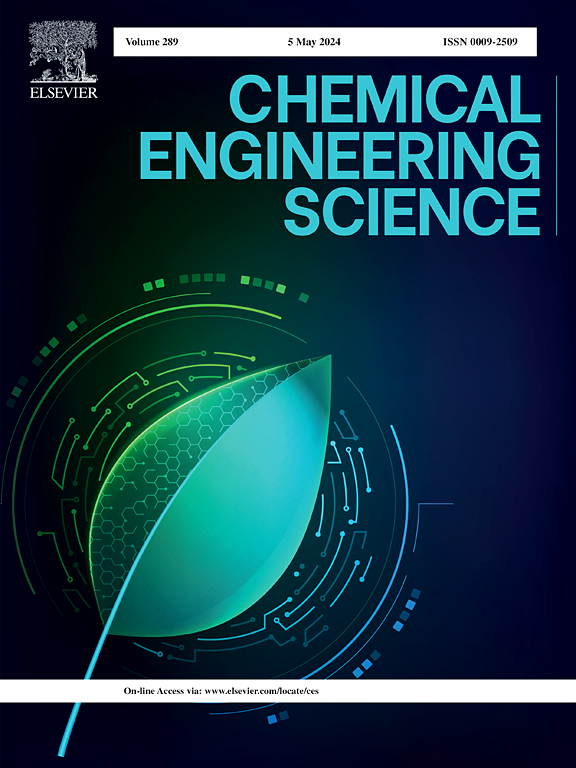Triple emulsion droplets formation in cross-flow microchannel under electrostatic field control
IF 4.3
2区 工程技术
Q2 ENGINEERING, CHEMICAL
引用次数: 0
Abstract
In droplet microfluidics, electrostatic fields can be used to regulate droplet formation, but the understanding of multilayer emulsion droplet formation is still not comprehensive. This study presents a numerical simulation study on the flow of triple emulsion within a cross-flow microchannel by establishing a coupled model of the electrostatic field and phase field. And assesses the quality and mechanical analysis of droplets. The research findings indicate that the emulsion in the channel generates triple emulsion droplets through both dripping and jetting regime. When the electric field strength remains constant, the average core/shell eccentricity (ωim-i) of the droplets generated by the dripping regime is 0.0366, and the average shell thickness (δs) can reach a maximum of 375.322 μm, indicating that the structure is more stable. And it was found that increasing the electric field strength enhances the internal velocity of the droplets, indicating that the circulation of its internal material accelerates. Electrostatic actuation accelerates triple emulsion formation and has an effect on droplet mono-dispersity and size, and results in thinner thickness triple emulsion. These research findings enhance the understanding of the droplet formation process in multilayer emulsions and provide a theoretical foundation for the microfluidic preparation of multi-component droplet.


静电场控制下横流微通道中三乳液滴的形成
在液滴微流体中,静电场可以用来调节液滴的形成,但对多层乳状液滴形成的认识还不全面。本文通过建立静电场和相场耦合模型,对三乳液在交叉流微通道内的流动进行了数值模拟研究。并评估液滴的质量和力学分析。研究结果表明,通道内的乳化液通过滴注和喷射两种方式产生三重乳化液滴。电场强度一定时,滴注形成的液滴的平均核壳偏心率(ωim-i)为0.0366,平均壳厚(δs)最大可达375.322 μm,结构更加稳定。结果表明,电场强度增大,液滴内部速度增大,表明液滴内部物质的循环加速。静电驱动加速了三乳液的形成,影响了液滴的单分散性和粒径,导致三乳液的厚度变薄。这些研究结果增强了对多层乳剂中液滴形成过程的认识,为多组分液滴的微流控制备提供了理论基础。
本文章由计算机程序翻译,如有差异,请以英文原文为准。
求助全文
约1分钟内获得全文
求助全文
来源期刊

Chemical Engineering Science
工程技术-工程:化工
CiteScore
7.50
自引率
8.50%
发文量
1025
审稿时长
50 days
期刊介绍:
Chemical engineering enables the transformation of natural resources and energy into useful products for society. It draws on and applies natural sciences, mathematics and economics, and has developed fundamental engineering science that underpins the discipline.
Chemical Engineering Science (CES) has been publishing papers on the fundamentals of chemical engineering since 1951. CES is the platform where the most significant advances in the discipline have ever since been published. Chemical Engineering Science has accompanied and sustained chemical engineering through its development into the vibrant and broad scientific discipline it is today.
 求助内容:
求助内容: 应助结果提醒方式:
应助结果提醒方式:


